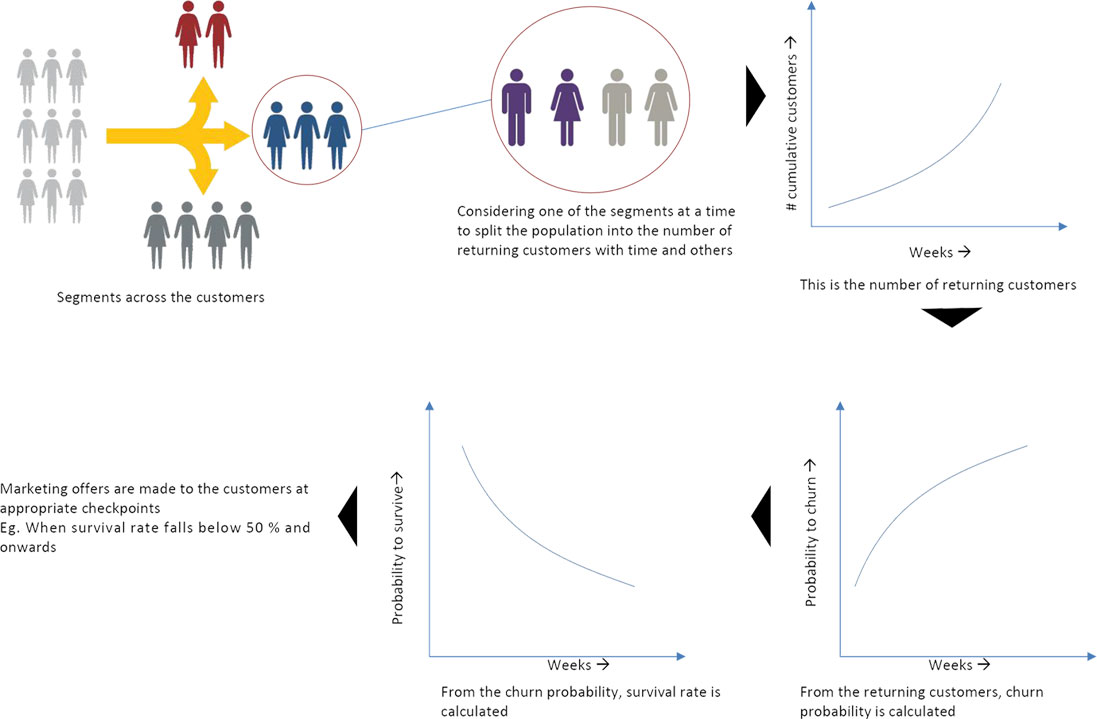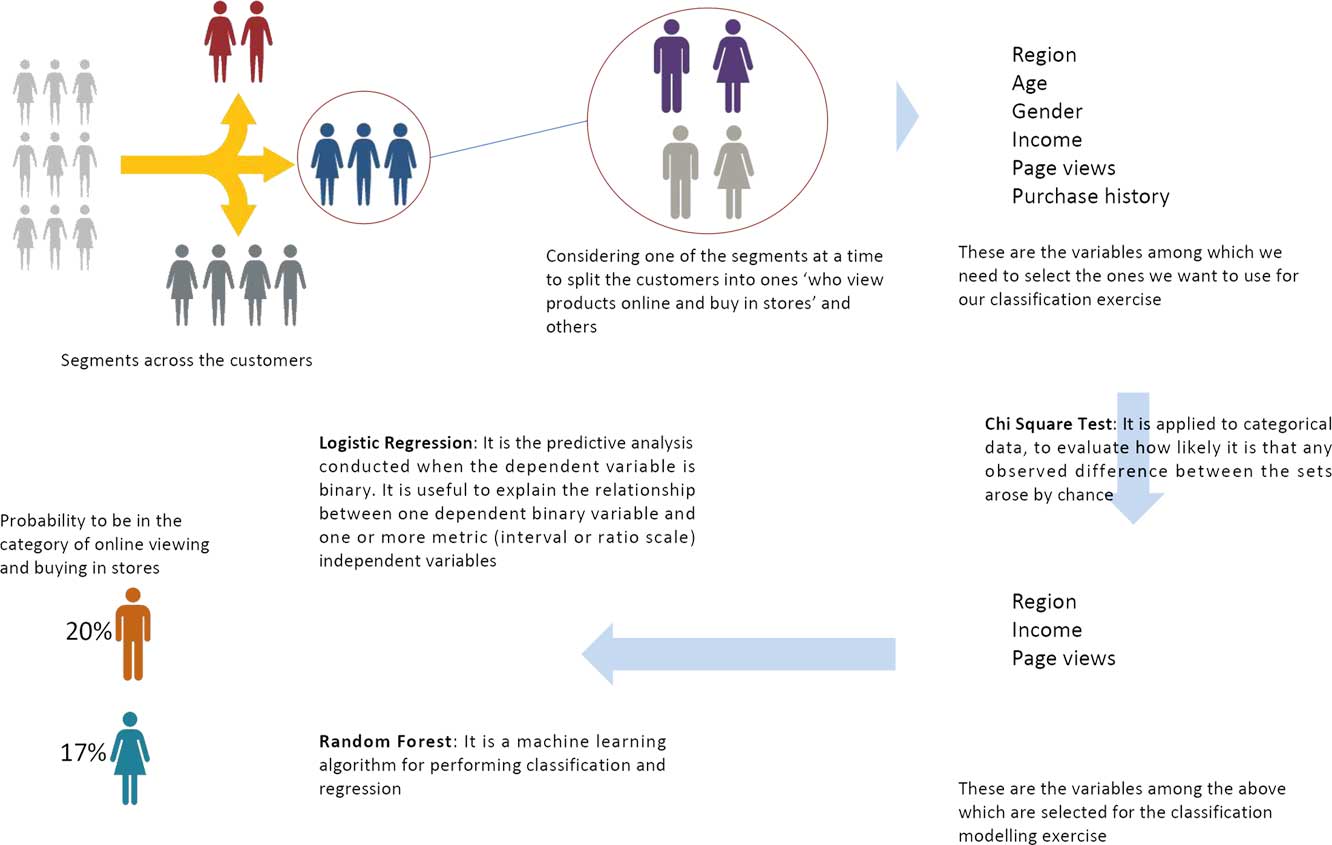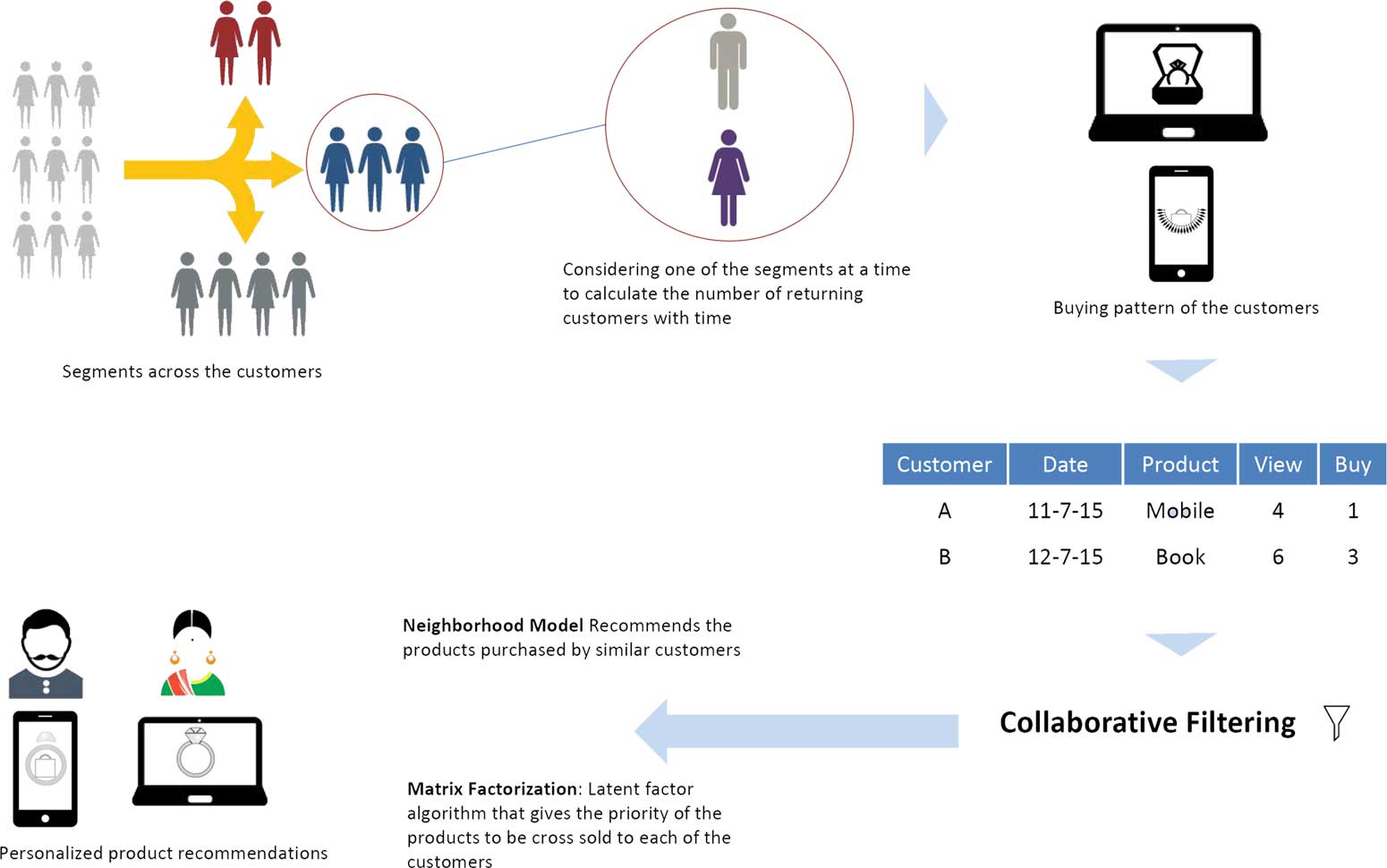Call Us Back
Kindly fill the above infomation and one of our executive will call you in 48 Hr.

For each month, the average growth for both the groups is compared against each other for all the 5 segments.

| Customer | Age | Location | Product | Views |
|---|---|---|---|---|
| A | 25 | North | Mobile | 4 |
| B | 33 | West | Book | 6 |
It is an iterative unsupervised machine learning algorithm to cluster the data.
Age: 21 – 25 yrs
Age: 30 – 35 yrs
How to identify customers who are likely to churn due to inactivity and when should they be sent promotional offers to retain them?

Unavailability of products on the website

Variety of products available

Quality of products

Competitors pricing

Promotion of products

Complaint resolution time

Loyalty programs

Post purchase service

Delivery delays

Staff behaviour at stores

How to identify the customers who are likely to view products on the website and then make purchases in stores?

Unavailability of product reviews on website

Activity on social media

Competitors pricing

Promotions of the products

Service at the showroom

Demographics

Visits on website

Product views

Visits to store

Purchase history

Shipping charges

Return policies

Product description

User experience on website

Options for fast-track delivery

What are the products that should be recommended to the customers based on their past behaviour?

Products that are viewed together

Products bought together

Categories of products

Range of prices

Promotions of the products

Service at the showroom

Demographics

Visits on website

Product views

Device used

Purchase history

Session Behavior

Referring Website

Views of product

Visitors’ frequency

Recency of visits

The data preparation phase covers all activities needed to construct the final dataset [data that will be fed into the modeling tool(s)] from the initial raw data. Data preparation tasks are likely to be performed multiple times and not in any prescribed order. Tasks include table, record, and attribute selection, as well as transformation and cleaning of data for modeling tools.






Obtain Data Set For Modeling And Establish Dependency
The data understanding phase starts with initial data collection and proceeds with activities that enable you to become familiar with the data, identify data quality problems, discover first insights into the data, and/or detect interesting subsets to form hypotheses regarding hidden information.




Conduct Exploratory Data Analysis, including
Univariate non-graphical: to help identify any outliers and better understand the distribution of the sample by primarily utilizing descriptive statistics
Univariate graphical: visualization of the descriptive statistics from the non-graphical techniques, including but not limited to:
Multivariate non-graphical: to understand the relationship between two or more of the variables contained in the databases through statistical techniques, including but not limited to:
Multivariate graphical:
The data preparation phase covers all activities needed to construct the final dataset [data that will be fed into the modeling tool(s)] from the initial raw data. Data preparation tasks are likely to be performed multiple times and not in any prescribed order. Tasks include table, record, and attribute selection, as well as transformation and cleaning of data for modeling tools.




Segmentation Modeling
Persistency/Churn Modeling:
At this stage in the project, you have built a model (or models) that appears to have high quality from a data analysis perspective. Before proceeding to final deployment of the model, it is important to thoroughly evaluate it and review the steps executed to create it, to be certain the model properly achieves the business objectives.




Variable 1
Modal Performance%

Variable 1
Variable 2
Modal Performance%

Variable 1
Variable 2
Variable n
Modal Performance%
Creation of the model is generally not the end of the project. Even if the purpose of the model is to increase knowledge of the data, the knowledge gained will need to be organized and presented in a way that the customer can use it. It will involve applying “live” models within an organization’s decision making processes and improve by applying machine learning techniques



Deployment
Track, Monitor and Learn